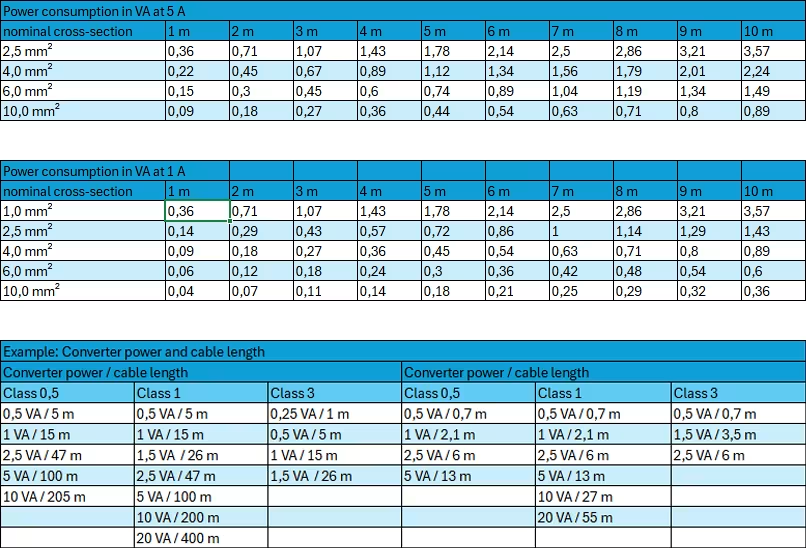Installing current transformers

Installation direction
Determine the direction of energy flow in the cable on which you want to measure. P1 indicates the side on which the power source is located, while P2 designates the consumer side.
Terminals S1/S2 (k/l)
The connections of the primary winding are labeled "K" and "L" or "P1" and "P2" and the connections of the secondary winding are labeled "k" and "l" or "S1" and "S2". The polarity must be such that the "energy flow direction" runs from K to L.
Swapping the S1/S2 terminals leads to incorrect measurement results and can also lead to incorrect control performance in Emax and PFC systems
Important: Observe the data sheets and the marking on the rating plate, as the polarity may vary depending on the model



Cable length and cross section
The power consumption (in W) caused by line losses is calculated as follows:
specific resistance for CU: 0.0175 Ohm *mm² / m for AI: 0.0278 Ohm * mm² / m l = cable length in m (outgoing and return cable) I = current in amperes A = cable cross section in mm²
Quick overview (power consumption Cu cable) for 5 A and 1 A
For every 10 °C change in temperature, the power consumed by the cables increases by 4%.

Series connection of measurement devices to a current transformer
Pv = UMG 1 + UMG 2 +....+ PCable + PTerminals. ...?

Parallel operation / summation current transformer
If the current is measured via two current transformers (e.g. 2 transformers), the total ratio of the current transformers must be programmed in the measurement device.
Example: Both current transformers have a transformation ratio of 1,000 / 5 A. The summation measurement is carried out with a 5+5 / 5 A summation current transformer.
The UMG must then be set as follows:
Primary current: 1,000 A + 1,000 A = 2,000 A secondary current: 5 A

Grounding of current transformers
In accordance with VDE 0414, current and voltage transformers with a series voltage of 3.6 kV or more should be secondary grounded. In the case of low voltage, grounding can be omitted if the transformers do not have large metal surfaces that can be touched. However, grounding low-voltage transformers is also common practice. Grounding to S1 is common. However, grounding can take place at the S1(k) terminal or S2(k) terminals. Important: always ground on the same side!
Use of protection transformers
If a measurement device is retrofitted and only a protective core is available, we recommend using a 5/5 winding current transformer to decouple the protective core.
